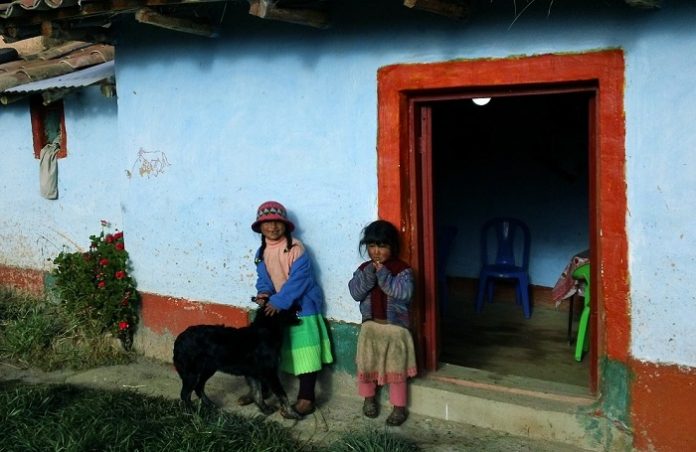
As the global recovery continues to struggle to gain its footing, growth in Latin America and the Caribbean has been marked down further and is likely to contract for the second consecutive year in 2016, according to a new report of the International Monetary Fund (IMF).
The IMF’s latest Regional Economic Outlook for the Western Hemisphere, released today (27 Apr) in Mexico City, projects that the region is set to contract by 0.5 percent in 2016—marking two consecutive years of negative growth for the first time since the Latin American debt crisis of 1982–83. This rate, however, masks the fact that many countries continue to grow, modestly but surely, whereas a small number of economies—representing about half of the region’s economy—face recession largely as a result of domestic factors.
Alejandro Werner, Director of the Western Hemisphere Department of IMF said “so once again we are forecasting an average negative rate of growth for the region as a whole. This implies that there are some countries that are facing negative growth, but we have many countries, the majority, that are actually exhibiting positive growth. In South America most of them positive but slightly lower than in the past and the other part of Latin America, Central America, the Caribbean, and Mexico exhibiting slightly higher growth than in the past. So in that sense it is not all negative news and we have some bright spots in Latin America as well.”
The deceleration in activity reflects weak external demand, further declines in commodity prices, volatile financial conditions, and for some important domestic imbalances and rigidities, the report said. At the same time, many countries have continued to experience large exchange rate depreciations, mainly as a result of deteriorating terms of trade and external demand.
For 2016, the IMF expects the region to bounce back to 1.5 percent growth.
Brazil is mired in a deep recession with growth contracting by 3.8 percent—the same rate as in 2015—due to economic and political problems. Chile’s growth is expected to slow to 1.5 percent in 2016, reflecting subdued confidence and sluggish investment in the mining sector. Argentina and Venezuela face output contractions of about 1 percent and 8 percent in 2016, respectively. But Argentina’s medium-term growth prospects have improved noticeably as a result of an ongoing transition to remove domestic imbalances and distortions and correct relative prices.
Werner said “in Argentina we have seen the new government implementing a set of policies that are geared towards reducing inflation, controlling the ramped up deficit and also to stimulate investment. All of these measures will have a significant contribution to growth and we’re expecting growth to accelerate significantly in the next few quarters.”
Peru’s economy has strengthened and growth is expected to rise further in 2016—to 3¾ percent, primarily boosted by ongoing mining investment.
Given the continued recovery in the United States, the growth outlook for Mexico and Central America remains relatively robust. Mexico is expected to grow at a moderate 2.4 percent in 2016. Countries in Central America have benefited from low oil prices and solid U.S. growth. Output growth for the region is projected at 4¼ percent in 2016.
The regional outlook is subject to various downside risks. Latin America remains particularly vulnerable to a stronger-than-expected slowdown in China—the destination for 15 percent to 25 percent of exports from Brazil, Chile, Peru, Uruguay, and Venezuela—and to further declines in commodity prices, the report said. A slowdown in China would contribute further to lower commodity prices and increase corporate risks.
A further deterioration of the situation in Brazil could lead to a sudden repricing of regional assets, reduced demand for exports among trading partners in the region, and an increase in perceived risk.
The report also cited risks from a slower-than-projected investment recovery if tighter financial conditions and lower growth prospects lead to balance sheet adjustments among companies that are increasingly indebted in foreign currency.
Growth prospects over the next five years will likely remain subdued, particularly for those facing lower commodity prices and weak investment. The IMF said that, throughout the region, policies and economic reforms should be designed to manage this transition.
The report also mentioned that growth in Latin America and the Caribbean is expected to remain below historical trends for the foreseeable future. Several reasons were cited, such as inadequate infrastructure networks, shortcoming in quality education, and relatively low export diversity, in addition to lower commodity prices. Structural policies aimed at resolving some of these bottlenecks could help raise potential output.
Werner said “I think it is very important for the region to start working on the new sources of growth. The region relied too much on external forces, commodities, abundant financing, et cetera. Now the world has changed and it’s very important to continue the work on the domestic sources of growth that should be focused on productivity, on investment, and therefore education, infrastructure, the rule of law are very important areas in which almost every country in Latin America should be working on.”
Where central banks enjoy strong credibility and exchange rate pass-through to inflation is limited, monetary policy can remain accommodative if needed to support demand. However, monetary policy should be geared toward preserving central bank credibility, if medium-term inflation expectations are rising.

